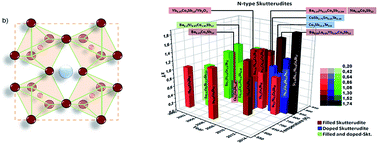Skutterudites as thermoelectric materials: revisited
Abstract
The research on skutterudites in the last few years has contributed to a better understanding of the physical processes which play an important role in enhancing their thermoelectric performance and to the discovery of novel filled compounds, with one of the most promising zT values at intermediate temperatures. Skutterudites are still an ongoing field of research, and an improvement of their efficiencies, stabilities, contacts, industrial scalable fabrication processes and other factors are expected in the near future in order to develop viable modules for intermediate temperature range applications, such as in the automobile industry, factories or incinerators. This paper gives a review on the status of research in the field of skutterudites.


 Please wait while we load your content...
Please wait while we load your content...